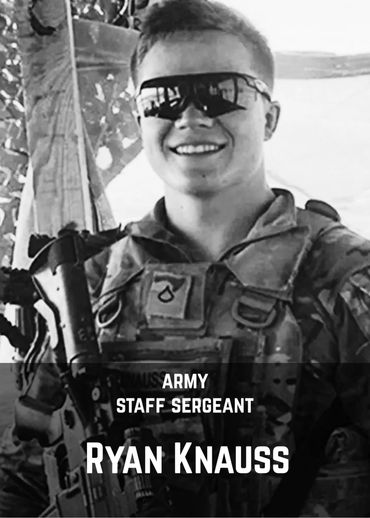.png/:/cr=t:0%25,l:0%25,w:100%25,h:100%25)
08.26.2021
What happened at abbey gate
On August 26, 2021, a suicide bombing at Abbey Gate outside Kabul’s airport killed 13 U.S. service members and nearly 200 Afghan civilians. The attacker, linked to ISIS-K, struck during the final days of the U.S. withdrawal, making it the deadliest day for American forces in over a decade.
“They were there to help others escape. And in that final act of service, they gave everything.”
abbey gate
We’ve chosen to share this overview of what happened at Abbey Gate on August 26, 2021. Our hope is to help others understand the context surrounding the day Daegan and twelve other brave service members lost their lives.
The information provided is based on publicly available sources and official investigations. However, we recognize that things continue to change. As new details emerge, some of what is shared here may become outdated.
We also understand that for the veterans who were there, personal experiences may not align with what has been reported. We respect and support them fully. Their memories, pain, and perspectives are real, and they matter deeply.
This overview is not intended to tell anyone else's story. It exists to preserve the memory of those we lost, to inform, and to ensure that Daegan’s sacrifice is never forgotten.
With gratitude,
The Family of Corporal Daegan Page
The Corporal Daegan Page Foundation
The Abbey Gate Attack – August 26, 2021
In the final, chaotic days of America’s withdrawal from Afghanistan, Hamid Karzai International Airport (HKIA) in Kabul became the center of a desperate and dangerous mission: to evacuate U.S. citizens, Afghan allies, and thousands of vulnerable civilians fleeing the return of Taliban control. The airport gates—Abbey, East, and North—served as narrow funnels of hope through which people pressed with everything they could carry, or nothing at all.
On August 26, 2021, at approximately 5:50 p.m. local time, a suicide bomber approached Abbey Gate.
The attacker—later identified as Abdul Rahman al-Logari (aka a fucking coward), an ISIS-K operative—detonated an explosive vest packed with ball bearings. The blast tore through the densely packed crowd and killed 13 U.S. service members—11 Marines, one Navy corpsman, and one Army soldier. Among them was Corporal Daegan William-Tyeler Page. Nearly 200 Afghan civilians were also killed, with countless more injured.
It was the deadliest day for American forces in Afghanistan in over a decade, and the single deadliest attack during the withdrawal.
“They were there to help others escape. And in that final act of service, they gave everything.”
What Led to the Attack
The fall of Kabul on August 15, 2021, launched an unprecedented evacuation effort. With the Taliban in control of the city, civilians flocked to the airport by the thousands. The U.S. and allied forces were operating under intense pressure, navigating a collapsing security perimeter, limited intelligence, and direct threats from terrorist groups like ISIS-K.
Warnings of a potential attack at Abbey Gate had circulated in the hours prior. Despite these alerts, service members remained in place to continue processing and protecting evacuees.
A subsequent investigation by U.S. Central Command determined that the attacker was a lone bomber—not part of a coordinated assault. The review also confirmed that there was no tactical opportunity to stop the bombing without risking greater loss of life during an already fragile and volatile mission (U.S. Department of Defense, 2022).
In April 2024, a supplemental review reaffirmed that no gunfire followed the blast, and that although a suspicious individual had been observed earlier in the day, facial-recognition analysis proved it was not the attacker (DoD, 2024).
Seeking Justice
On March 2, 2025, the U.S. arrested Mohammad Sharifullah, also known as "Jafar," an ISIS-K operative accused of planning the Abbey Gate bombing. He was charged with providing material support to ISIS-K and admitted to surveilling Abbey Gate, coordinating with the bomber, and aiding in logistical preparations for the attack that took Daegan’s life (U.S. Department of Justice, 2025).
This arrest marked a significant moment of accountability, though for the families of the fallen, justice can never be fully complete.
Why We Remember
Operation Allies Refuge became the largest NEO airlift in U.S. History, 124,000 civilians were evacuated from Kabul.
Corporal Daegan Page was more than a Marine. He was a son, a brother, a friend. He was funny, loyal, quick to laugh, and ready to help. His service reflected his heart: protect others, no matter the cost.
What happened at Abbey Gate was not just a tragedy—it was a moment that revealed the very best of those who stood guard until the very end. The chaos of that day cannot overshadow the courage that defined it.
This foundation exists not only to honor Daegan’s memory, but to carry forward his spirit of service, sacrifice, and compassion. We remember Abbey Gate not to dwell in loss, but to ground our mission in truth, to uplift the stories of the fallen, and to ensure that their names—and their actions—are never forgotten.
Videos - View discretion advised
Tense Moments Before the Attack
Viewer discretion is advised.
Footage recorded by a U.S. service member at Abbey Gate on August 26, 2021, shows the tense moments before the bombing. The clip captures a Marine being pulled into the crowd near the gate as evacuation operations continue. Service members can be seen scanning the crowd, communicating, and working under extreme pressure, while Afghan civilians press forward holding out documents in a desperate attempt to escape. The scene reflects both the urgency and determination of those on the ground that day.
The Moment of the Blast at Abbey Gate
Viewer discretion is advised.
Footage recorded by a U.S. service member at Abbey Gate on August 26, 2021, captures the moment of the suicide bombing during the Kabul evacuation. Filmed among fellow service members just 157 feet from the blast, the clip shows the sudden explosion and the confusion that follows.
Additional Context: When viewed slowly, an individual in black appears in the space between a Marine’s antenna and face in the frame, just before the explosion. This individual is believed to be the attacker, and the blast appears to originate from that location.
Aerial View Following the Blast
Viewer discretion is advised.
Aerial footage taken from a U.S. aircraft over Abbey Gate on August 26, 2021, captures the moments immediately following the suicide bombing. From above, smoke rises from the blast site while service members rush to aid the wounded. The crowd that had been pressed tightly together moments before is now scattered, with visible chaos as civilians attempt to flee and others remain near the scene. The movements of troops on the ground reflect both urgency and discipline as they respond under unimaginable circumstances. This broader view reveals the scale of the attack’s impact on both military personnel and Afghan civilians.
The 13










.png/:/rs=w:370,cg:true,m)


Leave a note for the family and friends of the 13
give a gift to honor his sacrifice
Corporal Daegan Page Foundation
1330 Mike Fahey Street Omaha, NE 68102
© 2025 Corporal Daegan Page Foundation
Employer Identification # 88-0676019
Corporal Daegan Page Foundation is an independent Nebraska Non-Profit Corporation and IRS IRC 501c(3) tax exempt public charity.
Corporal Daegan Page Foundation is not affiliated with the DoD, VA, or any Government Agency.
Are you a veteran and need crisis support right now?
veteranscrisisline.net 24/7, confidential crisis support for Veterans and their loved ones: Dial 988 then Press 1, or text 838255.

Expedited Food Security Applications
The Corporal Daegan Page Foundation has always offered Hardship and Emergency Assistance to active duty and veteran service members, and gold star families.
In response to the current federal government shutdown, we are expediting approval decisions for active duty, veterans, and gold star families who currently receive SNAP benefits.


